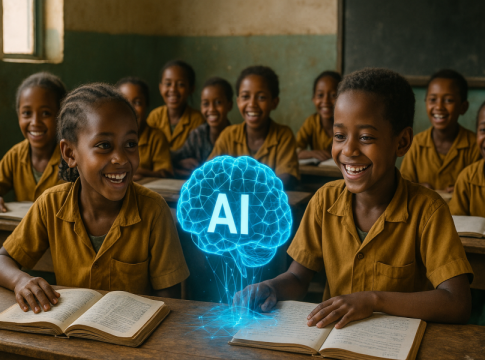Bridging the Educational Divide: The Role of AI in Underserved Communities
In recent years, the concept of Artificial General Intelligence (AGI) has captivated global interest, sparking discussions around its vast potential. However, as advancements in artificial intelligence continue, a pressing issue arises: ensuring that the benefits of AI are distributed equitably. This is particularly crucial for underserved populations facing significant educational and economic challenges.
Transforming Education through AI
AI as an Educational Equalizer:
The promise of AI lies not just in its technological advancements but in its ability to enact social change. Many communities, particularly those outside developed urban areas, struggle with access to quality education. For them, basic educational resources remain elusive, often compounded by linguistic barriers and irrelevant curricula. For instance, UNESCO reports that around 40% of students worldwide don’t have access to education in a language they fully understand—an issue that severely hinders learning.
Navigating Linguistic Hurdles
Breaking Language Barriers with AI:
AI has the potential to revolutionize multilingual education through innovative translation tools. Yet, most advanced language technologies cater to high-demand languages, leaving many local languages unchecked. Collaboration between AI firms and nonprofits can fill this gap. A case in point is the partnership between iCog Labs, Ethiopia’s leading AI company, and Curious Learning, which has developed local-language reading applications that serve over 85,000 users.
Moreover, iCog’s Leyu platform aims to address data scarcity by enabling communities to contribute linguistic resources, thereby allowing local developers to create tailored language models. This proactive approach ensures that as communities grow connected, they also gain immediate access to the digital landscape.
Contextualizing Educational Content
Making Learning Relevant:
Educational content designed with local contexts in mind fosters engagement. AI can tailor lessons based on cultural realities—think of science lessons that draw from local farming practices or math problems tied to community markets. This not only enhances relevance but also encourages practical application.
iCog’s innovative Digitruck project showcases this idea, offering a mobile classroom stocked with computers and equipment. It provides hands-on education in coding and AI concepts, making technology relatable to young learners in rural Ethiopia.
AI as an Ally, Not an Adversary
Changing Perceptions of AI:
In contrast to fears of job displacement prevalent in wealthier nations, communities in developing regions often view AI as a vital ally. For instance, Nigerian farmers benefit from AI-powered call centers that provide agricultural advice, demonstrating how technology can enhance livelihoods rather than threaten them.
Fostering Community Cohesion
Building Collective Learning Frameworks:
AI’s integration into underserved communities should respect existing social structures, prioritizing collective learning over individualism. For example, community-led workshops could utilize AI-generated materials, offering discussions on sustainable agriculture or local healthcare practices, thus reinforcing social ties.
Navigating Ethical Challenges
Ensuring Safe and Inclusive AI Development:
With the promise of AI also comes the responsibility of ensuring ethical implementation. As AI becomes more prevalent in education, it’s essential to support human educators rather than replace them. AI should enhance learning experiences, fostering curiosity and critical thinking rather than merely providing answers.
Decentralizing AI for Global Educational Equity
The current landscape of AI technology is dominated by a select few corporations, which often overlook marginalized communities. By advocating for decentralized AI development, platforms like SingularityNET aim to create a more equitable distribution of technology, catering to diverse global needs rather than narrow corporate interests.
A Call to Action
The journey toward equitable AI-enriched education requires intentionality, cultural understanding, and community involvement. The potential benefits—eliminating barriers to education and empowering communities—make this endeavor not just critical, but imperative.
As we reflect on these advancements, let’s remember the transformative potential of AI. Ensuring that every child has the opportunity to learn, create, and innovate is not just a noble goal; it’s a necessary step toward uplifting humanity as a whole. When a child writes their first lines of code thanks to access to AI, the true promise of technology becomes evident.

Writes about personal finance, side hustles, gadgets, and tech innovation.
Bio: Priya specializes in making complex financial and tech topics easy to digest, with experience in fintech and consumer reviews.

